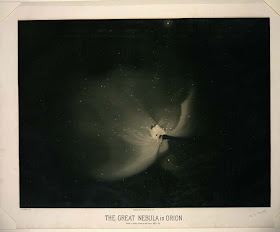 |
| Click any image to enlarge |
Trouvelot immigrated to the U.S. in 1852. At the time he was an avid amateur entomologist. While trying to breed a more disease resistant silk spinning moth he imported some gypsy moth eggs. They got loose and spread widely in the Eastern States causing a lot of damage -- to the tune of $870 million a year -- to hardwood trees to this day. Thanks a lot Étienne.
However, after that fiasco he became interested in astronomy and his drawings caught the attention of the director of the Harvard College Observatory who hired him. From there Trouvelot moved to the U.S. Naval Observatory and its 26 inch refractor. Eventually he moved back to France where he continued his work.
When I was younger I spent some time fooling around and trying to draw the Moon using a 6 inch Meade reflector. From that experience I can say that it is extremely difficult to draw things seen through a telescope. You have to fix what you have seen through the scope in your mind, all the while the image seen through the lens is dancing around due to the sky's conditions. Then you race over to a drawing pad lit by a red bulb and try to reproduce what you've seen. I'm impressed by Trouvelot's work.
If you like these illustrations you might also like my earlier post Illustrations of a different sort which features a wide variety of old scientific illustrations.
There are more examples of Trouvelot's work after the jump, and a few more at Las Boite Verte's post Illustrations astronomiques en 1870 where I found these examples.











No comments:
Post a Comment